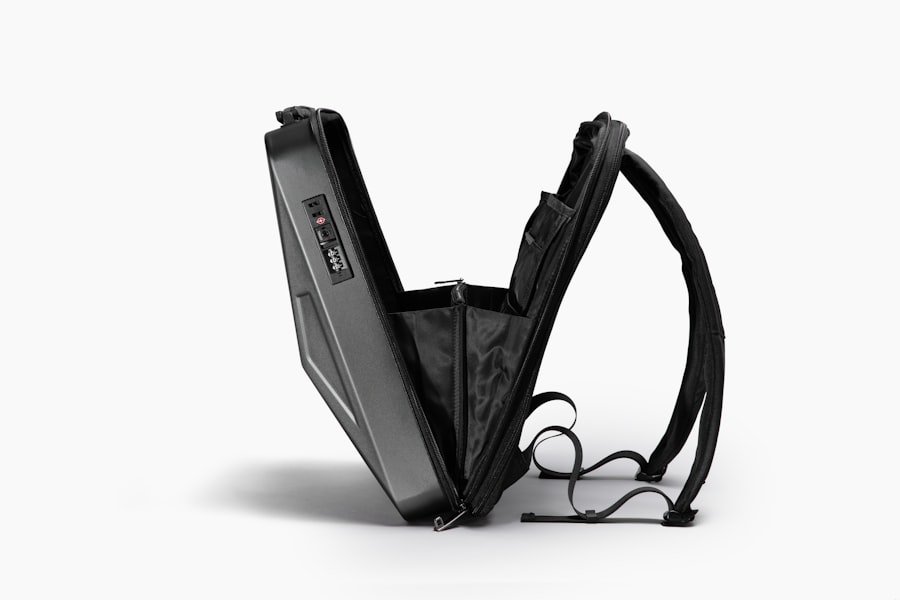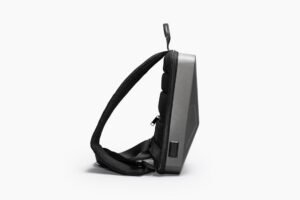USB cables, or Universal Serial Bus cables, are a type of cable that is used to connect devices to a computer or other electronic devices. They are widely used in modern technology for various purposes such as charging, data transfer, and connecting peripherals. USB cables work by transmitting data and power between devices through a series of wires and connectors.
The importance of USB cables in modern technology cannot be overstated. They have become the standard for connecting devices due to their versatility, ease of use, and widespread compatibility. USB cables are used in a wide range of devices including smartphones, tablets, cameras, printers, and external hard drives. They have revolutionized the way we connect and interact with our devices, making it easier than ever to transfer data and charge our devices.
Key Takeaways
- USB cables are used to connect devices to each other and transfer data or charge devices.
- USB cables have evolved from USB 1.0 to USB 4.0, with each version offering faster data transfer speeds and improved functionality.
- USB-C is the latest and most versatile USB cable standard, offering faster charging, data transfer, and compatibility with a wide range of devices.
- There are different types of USB cables, including Type-A, Type-B, and Type-C, each with its own unique features and compatibility.
- When choosing a USB cable, factors to consider include the device you are connecting, the type of USB port it has, and the intended use of the cable.
The Evolution of USB Cables: From USB 1.0 to USB 4.0
USB cables have gone through several iterations over the years, with each version bringing advancements in technology and speed. The first version of USB, USB 1.0, was introduced in 1996 and had a maximum data transfer rate of 12 Mbps. It was followed by USB 1.1, which increased the data transfer rate to 12 Mbps.
USB 2.0 was introduced in 2000 and brought significant improvements in speed, with a maximum data transfer rate of 480 Mbps. This version of USB became widely adopted and is still used today in many devices.
USB 3.0 was introduced in 2008 and brought even faster data transfer speeds, with a maximum rate of 5 Gbps. It also introduced new features such as increased power output for charging devices and improved power management.
USB 3.1 was introduced in 2013 and doubled the data transfer rate to 10 Gbps. It also introduced a new connector called USB Type-C, which is smaller and reversible, meaning it can be plugged in either way.
The latest version of USB, USB 4.0, was announced in 2019 and is expected to bring even faster data transfer speeds, with a maximum rate of 40 Gbps. It will also bring improvements in power delivery and compatibility with previous versions of USB.
Understanding USB-C: The Latest and Most Versatile USB Cable Standard
USB-C is the latest and most versatile USB cable standard. It is a small, reversible connector that can be plugged in either way, making it much more convenient to use than previous USB connectors. USB-C cables are capable of carrying both power and data, which means they can be used for charging devices as well as transferring data.
One of the key features and benefits of USB-C is its high data transfer speeds. USB-C cables are capable of transferring data at speeds of up to 10 Gbps or even higher, depending on the version of USB being used. This makes them ideal for transferring large files quickly and efficiently.
USB-C cables are also capable of delivering higher power output than previous USB cables. This means that they can charge devices faster, which is especially useful for smartphones and other portable devices that require frequent charging.
Another advantage of USB-C is its compatibility with different devices. USB-C ports can be found on a wide range of devices including smartphones, tablets, laptops, and even some desktop computers. This means that you can use the same cable to charge and transfer data between multiple devices, which is much more convenient than having to carry multiple cables.
Advantages of USB-C: Faster Charging, Data Transfer, and More
| Advantages of USB-C | Description |
|---|---|
| Faster Charging | USB-C can deliver up to 100 watts of power, allowing for faster charging of devices. |
| Data Transfer | USB-C supports data transfer speeds of up to 10 Gbps, making it faster than previous USB versions. |
| Reversible Connector | USB-C has a reversible connector, making it easier to plug in devices without having to worry about orientation. |
| Compatibility | USB-C is compatible with a wide range of devices, including laptops, smartphones, and tablets. |
| Multi-Functional | USB-C can be used for a variety of functions, including charging, data transfer, and video output. |
One of the major advantages of USB-C is its faster charging capabilities. USB-C cables are capable of delivering higher power output than previous USB cables, which means that they can charge devices faster. This is especially useful for smartphones and other portable devices that require frequent charging. With USB-C, you can charge your device in a fraction of the time it would take with a traditional USB cable.
Another advantage of USB-C is its high-speed data transfer capabilities. USB-C cables are capable of transferring data at speeds of up to 10 Gbps or even higher, depending on the version of USB being used. This makes them ideal for transferring large files quickly and efficiently. Whether you’re transferring photos, videos, or other large files, USB-C can handle it with ease.
USB-C also has the ability to connect multiple devices at once. With the use of hubs or adapters, you can connect multiple devices to your computer or other electronic devices using a single USB-C port. This is especially useful for laptops and other devices that have limited ports. With USB-C, you can connect your mouse, keyboard, external hard drive, and other peripherals all at once.
Types of USB-Cables: From Type-A to Type-C, and Everything in Between
There are several different types of USB cables available, each with its own unique features and compatibility. The most common types of USB cables are Type-A, Type-B, and Type-C.
Type-A cables are the traditional rectangular-shaped USB cables that most people are familiar with. They have a flat rectangular connector on one end that plugs into the computer or other electronic device, and a square-shaped connector on the other end that plugs into the device being connected. Type-A cables are widely used for connecting peripherals such as keyboards, mice, printers, and external hard drives.
Type-B cables are less common than Type-A cables and are typically used for connecting devices such as printers and scanners. They have a square-shaped connector on one end that plugs into the computer or other electronic device, and a smaller rectangular-shaped connector on the other end that plugs into the device being connected.
Type-C cables are the latest and most versatile type of USB cable. They have a small, reversible connector that can be plugged in either way, making them much more convenient to use than previous USB connectors. Type-C cables are capable of carrying both power and data, which means they can be used for charging devices as well as transferring data. They are also capable of delivering higher power output than previous USB cables, which means they can charge devices faster.
Choosing the Right USB Cable for Your Device: Factors to Consider

When choosing a USB cable for your device, there are several factors to consider. The first factor to consider is compatibility with your device. Not all devices have the same type of USB port, so it’s important to choose a cable that is compatible with your device. For example, if your device has a USB-C port, you will need a USB-C cable.
Another factor to consider is the length of the cable. USB cables come in various lengths, ranging from a few inches to several feet. It’s important to choose a cable that is long enough to reach from your device to the computer or other electronic device you are connecting it to, but not so long that it becomes cumbersome or gets in the way.
Durability is another important factor to consider when choosing a USB cable. USB cables can be prone to wear and tear, especially if they are used frequently or subjected to rough handling. Look for cables that are made from high-quality materials and have reinforced connectors to ensure they will last.
Common USB Cable Issues and How to Troubleshoot Them
While USB cables are generally reliable, there are some common issues that can occur. One common issue is a loose connection. If your device is not charging or transferring data properly, it could be due to a loose connection between the cable and the device or the cable and the computer or other electronic device. Try unplugging and re-plugging the cable to ensure a secure connection.
Another common issue is a damaged cable. USB cables can become damaged over time, especially if they are subjected to rough handling or frequent bending. If your cable is frayed, bent, or otherwise damaged, it may not work properly. In this case, you will need to replace the cable with a new one.
Sometimes, the issue may not be with the cable itself, but with the device or computer you are connecting it to. If your device is not charging or transferring data properly, try connecting it to a different device or computer to see if the issue persists. If the issue only occurs with one particular device or computer, there may be an issue with that device or computer.
Tips for Maintaining Your USB Cables: Do’s and Don’ts
To ensure that your USB cables last as long as possible and continue to work properly, there are some do’s and don’ts to keep in mind.
Do’s:
– Properly store your USB cables when not in use. Avoid bending or twisting the cables and keep them away from sharp objects that could damage them.
– Handle your USB cables with care. Avoid pulling on the cables or yanking them out of devices forcefully.
– Clean your USB cables regularly to remove dust and debris. Use a soft cloth or cotton swab to gently wipe the connectors.
– Use cable management solutions such as cable ties or clips to keep your USB cables organized and prevent them from tangling.
Don’ts:
– Don’t expose your USB cables to extreme temperatures or moisture, as this can damage the cables.
– Don’t wrap your USB cables too tightly around objects, as this can cause them to become damaged or tangled.
– Don’t use excessive force when plugging in or unplugging your USB cables, as this can damage the connectors.
– Don’t use your USB cables for purposes they were not intended for, such as lifting or pulling heavy objects.
USB Cable Accessories: Hubs, Adapters, and Extensions
In addition to USB cables, there are also various accessories available that can enhance the functionality and versatility of your USB cables. Some of the most common USB cable accessories include hubs, adapters, and extensions.
USB hubs are devices that allow you to connect multiple USB devices to a single USB port on your computer or other electronic device. They typically have multiple USB ports that you can plug your devices into, allowing you to expand the number of devices you can connect to your computer. USB hubs are especially useful for laptops and other devices that have limited ports.
USB adapters are devices that allow you to convert one type of USB connector to another. For example, if you have a device with a USB-C port but only have a USB-A cable, you can use a USB-C to USB-A adapter to connect the device to your computer or other electronic device. USB adapters are useful for ensuring compatibility between different types of USB connectors.
USB extensions are cables that allow you to extend the length of your existing USB cables. They typically have a male connector on one end that plugs into your existing cable, and a female connector on the other end that allows you to plug in another cable. USB extensions are useful for situations where your existing cable is not long enough to reach from your device to the computer or other electronic device you are connecting it to.
Future of USB Cables: What to Expect in the Next Decade
The future of USB cables looks promising, with advancements in technology and potential for wireless charging. In the next decade, we can expect to see even faster data transfer speeds, higher power output for charging devices, and improved compatibility with different devices.
One of the most exciting developments in USB cable technology is the potential for wireless charging. Wireless charging allows you to charge your devices without the need for a physical connection to a power source. This technology is already available in some devices, but it is expected to become more widespread in the coming years. With wireless charging, you can simply place your device on a charging pad or dock and it will start charging automatically.
USB cables are also expected to integrate with other technologies, such as virtual reality and augmented reality. As these technologies become more advanced and widespread, the need for high-speed data transfer and power delivery will increase. USB cables will play a crucial role in connecting and powering these devices, allowing users to have immersive and interactive experiences.
In conclusion, USB cables are an essential part of modern technology, allowing us to connect and interact with our devices in a convenient and efficient way. From their humble beginnings with USB 1.0 to the latest USB 4.0 standard, USB cables have evolved to become faster, more versatile, and more powerful. With the introduction of USB-C, we now have a cable that is capable of delivering high-speed data transfer, fast charging, and compatibility with a wide range of devices. As technology continues to advance, we can expect to see even more exciting developments in USB cable technology in the future.
If you’re in need of a reliable and fast charging USB cable, look no further than the Sweguard USB Type-C Charger Cable. This cable offers 3.1A fast charging and comes in a convenient 2-pack with 6.6ft and 6.6ft lengths. With its durable construction and high-speed charging capabilities, it’s the perfect accessory for all your USB Type-C devices. Check out this article to learn more about the Sweguard USB Type-C Charger Cable and how it can enhance your charging experience. Read more









